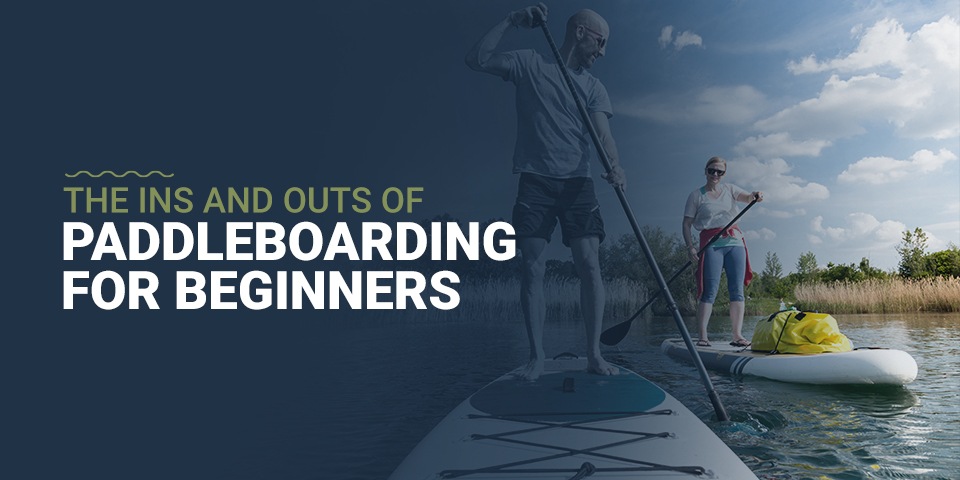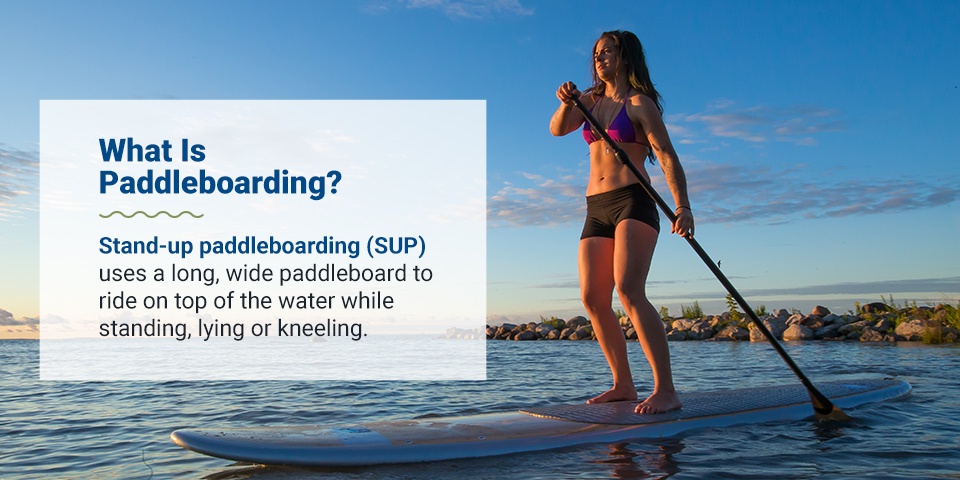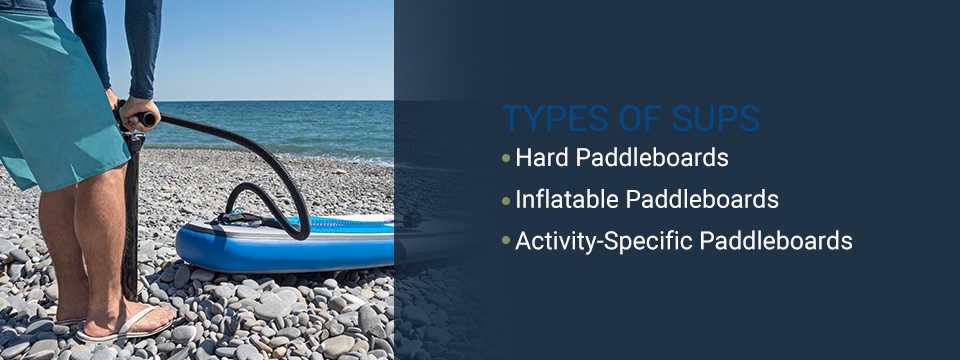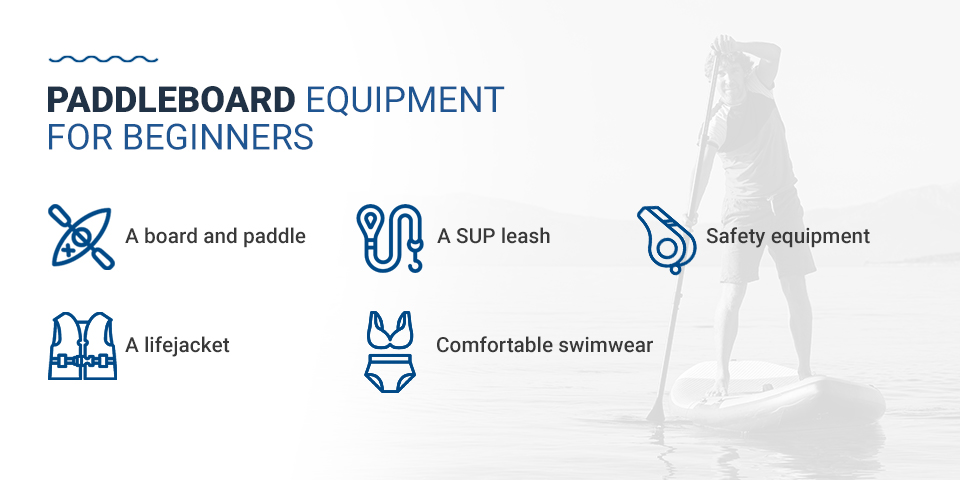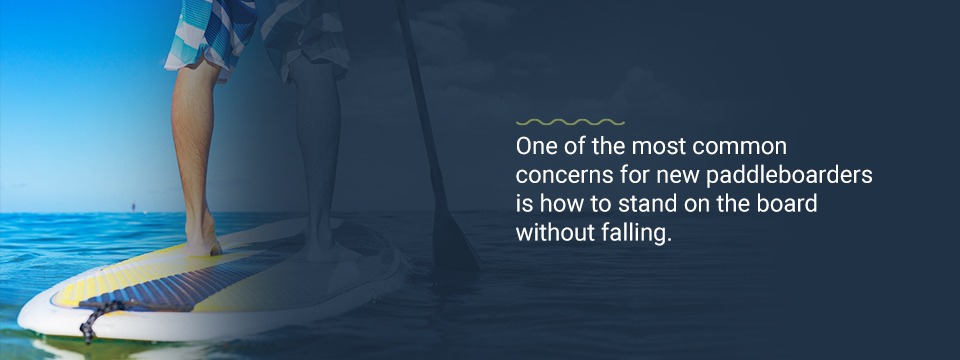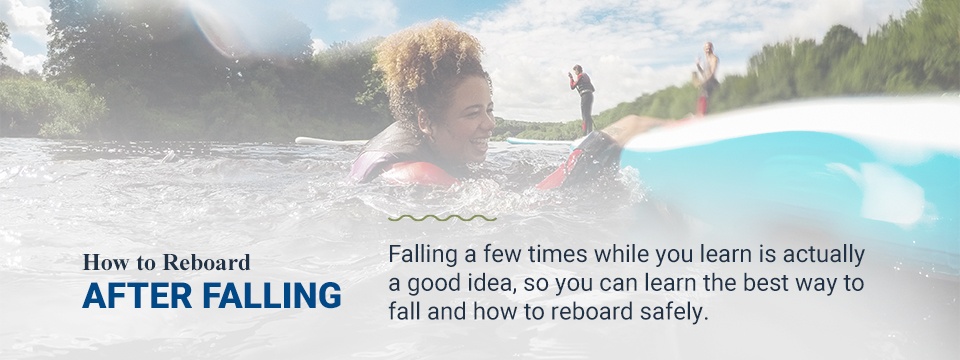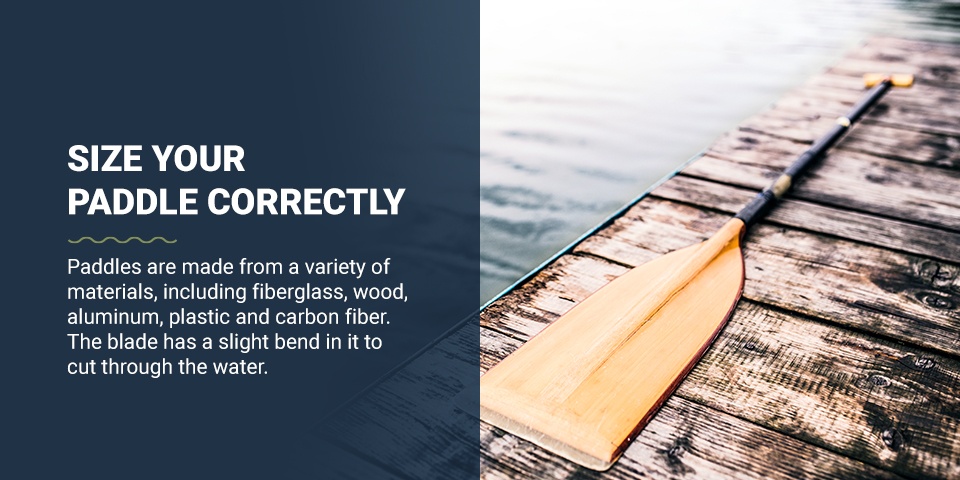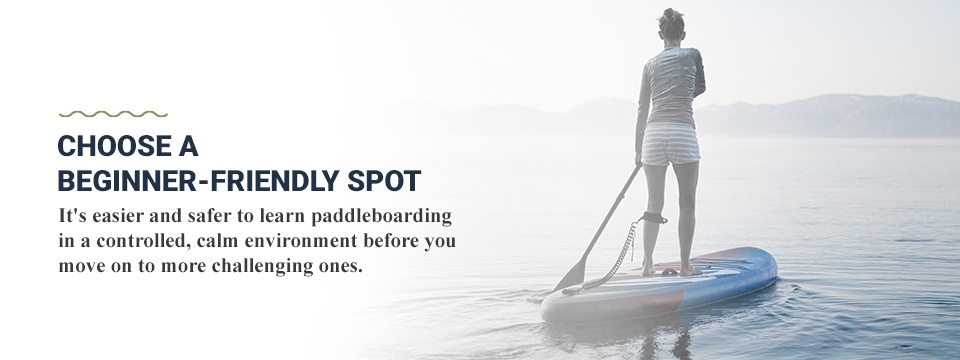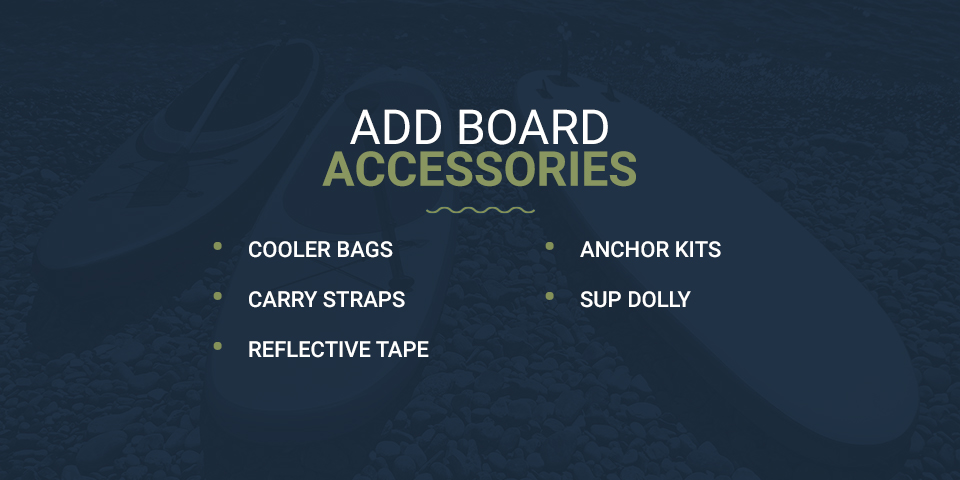Filters
The Ins and Outs of Paddle Boarding for Beginners
Paddleboarding has been steadily growing in popularity since 2010, with more people diving in each year. Water enthusiasts and nature lovers enjoy paddleboarding because it’s a low-impact form of exercise and easily accessible without expensive barriers to entry. Anyone with a paddleboard can give the sport a try, whether they live near an ocean, lake or river. It’s also one of the easiest watersports to learn for beginners.
Here’s everything you need to know about trying paddleboarding for the first time, including the equipment you need, techniques to learn and how to choose the right board.
Read the full article or jump to a specific section:
- What Is Paddleboarding?
- Types of SUPs
- Paddleboard Equipment for Beginners
- Paddleboarding Techniques for Beginners
- Tips for Paddleboarding Beginners
- Partner With EZ Dock to Simplify Your Paddleboarding Experience
What Is Paddleboarding?
Stand-up paddleboarding (SUP) uses a long, wide paddleboard to ride on top of the water while standing, lying or kneeling. It combines elements of surfing and kayaking — you balance while riding the waves and use a paddle to propel and turn. You can go paddleboarding in any body of water, whether it’s a busy ocean beach or calm lake waters.
SUP helps you build muscle, improve balance and gain flexibility, and you can easily adapt it to your experience level and interests. It can be as relaxing or as challenging as you want it to be, making it the ideal watersport for beginners.
Since anyone can learn how to paddleboard for very little startup investment — most places offer paddleboard rentals if you aren’t ready to invest in your own gear — it’s becoming more popular with all types of people. You can even combine SUP with other recreation, like yoga, surfing and fishing.
Types of SUPs
SUPs come in multiple widths and lengths. The wider the board, the easier it will be to maintain your balance as a beginner. Most beginners should start with a board at least 30 inches or wider. The longer the board, the faster it is, while shorter boards are easier to maneuver and control. Most SUPs range between 9 feet and 11 feet.
In addition to your experience level and paddling goals, compare your body weight to the maximum weight recommendation for each SUP. Otherwise, you risk your board sinking too low in the water.
Some SUP boards have one or more fins on the top to help you move quickly through the water. The fins are always on the back.
1. Hard Paddleboards
Hard paddleboards have a thick foam core wrapped in durable epoxy or fiberglass. Some hard paddleboards might still have a soft top, called the deck, for comfort.
Because they’re heavier, hard paddleboards glide smoother through the water and provide more wind resistance than inflatable SUPs. They can be cumbersome to store and transport, so make sure you have enough storage space and a travel rack for your vehicle before investing in one.
2. Inflatable Paddleboards
Inflatable boards are a newer version of traditional paddleboards made from ultra-strong materials that make them lightweight but easy to roll, transport and store. They have a softer deck that helps you avoid tiring and may be easier on your feet and muscles than some hard paddleboards.
Inflatable boards are tough, so damage rarely occurs, but patch kits are available for punctures or holes. Inflatable SUPs come with a specific pounds per square inch (PSI) rating to tell you how much to inflate them.
3. Activity-Specific Paddleboards
Because paddleboarding is so versatile, some SUPs are designed to accommodate specific activities, as well as standard paddleboarding:
- Yoga: SUP yoga gives people the opportunity to get grounded, stretch and relax from the water when surrounded by nature and fresh air. SUP yoga boards have a wider deck pad to allow plenty of room for poses, and they typically sit higher off the water.
- Fishing: Fishing from a paddleboard lets you access new areas that may be otherwise hard to reach on a motorized boat or by foot alone. Fishing SUPs have more room atop the board to store your gear and equipment. Boards might also have attachments and accessories to make fishing easier, like a rod holder or mount.
- Surfing: Instead of relying on your body alone, SUP surfing gives you the added help of your paddle to ride waves. Surfing SUPs are designed for ocean water and give surfers enough stability to cut through the wind and currents.
- Racing: Competitive SUPs are longer and more narrow than standard boards because the shape lets them cut through water quickly.
- Touring: Touring is a long-distance exploration of a lake, river or ocean. Touring SUPs are long and narrow, so they can fit into smaller areas, and they have a pointed tip to help steer and turn.
Paddleboard Equipment for Beginners
Whether you’re renting or buying your gear, must-have equipment for beginner paddleboarding includes:
- A board and paddle: Check with your local recreation shop or marina to rent a board and paddle for the day. This will give you a better idea of the type of SUP you’re interested in and which is most comfortable for your body type.
- A lifejacket: A personal flotation device (PFD) like a lifejacket will keep your head above water when you fall off your board. Look for one that fits your body size comfortably and securely.
- A SUP leash: Every paddleboarder needs a SUP leash. A SUP leash is a coiled or straight strap that you attach to your board and your ankle or calf. It helps you keep track of your board after you fall, but it’s easy to detach if you get tangled. Paddle leashes do the same thing but attach to your paddle and arm to keep it from drifting away.
- Comfortable swimwear: What you wear on your paddleboard is entirely up to you and your plans for the day. Some prefer swimsuits, wetsuits and board shorts, while others opt for flexible athletic wear and rash guards for more active paddling. Whatever you wear should be made from water-safe clothing.
- Safety equipment: Wear a safety whistle to blow if you fall off your board or need to warn oncoming boat traffic of your presence. Bring a light if you are paddling after dark or on an overcast day. Don’t forget to apply sunscreen at regular intervals.
Paddleboarding Techniques for Beginners
Paddleboarding is easy to learn if you take it one step at a time. Though there are multiple ways to paddleboard, every boarder should first learn how to stand, balance, recover and paddle. Check out the steps below to learn how to use a paddleboard:
How to Stand
One of the most common concerns for new paddleboarders is how to stand on the board without falling. Fortunately, it’s easier than it looks — especially if you start with a wider board. Here’s how to start:
- Choose a shallow part of the water to board in before paddling toward a deeper end.
- Kneel on the board with one knee on either side of the handle hole.
- Grip the paddle shaft in front of your knees with your fingers wide and make a few strokes on either side of the board.
- Slowly replace one knee with your foot in the middle of the board.
- Straighten your arm on that side.
- Repeat with the other side.
- Space your feet shoulder-width apart in the center of the board with your feet parallel and flat against the deck.
- Bend your knees slightly and engage your core while you paddle further out.
If at any point you feel you’re losing your balance, use your paddle to hold yourself steady until you can find your footing again.
How to Stay Balanced
Balancing on a paddleboard takes practice, but the better you can stay steady on your board, the faster and farther you’ll be able to travel. Practice your balance by following these tips:
- Keep your knees bent slightly and your core centered.
- Resist the urge to rely too much on your arm strength. Instead, engage your whole body to stay grounded.
- Do not look down at your feet or the water. Keep your gaze pointed ahead without carrying tension in your neck and shoulders.
- Maintain good posture with your shoulders squared behind you and your legs placed shoulder-width apart.
- Keep your toes pointed toward the front of the board and your feet even with one another.
- Push your body weight into the balls of your feet.
Learning balance is the only way to master paddling while standing. You will need to adjust your stance as you encounter obstacles, waves and distractions. As you move around your board, remember to keep your weight focused in the middle part of the deck and take small, deliberate steps. Practice balancing in all types of water and weather conditions, like wind, gentle currents and around turns.
How to Reboard After Falling
One of the most common beginner mistakes is to get discouraged when you fall or slip. It’s entirely normal to fall off your paddleboard — even experienced riders take an accidental dive every once in a while. Falling a few times while you learn is actually a good idea, so you can learn the best way to fall and how to reboard safely. As long as you have your PFD on and your board leash attached, falling is a normal — and possibly even a fun — part of the paddleboarding process.
If you feel yourself losing control or traction, try to fall as far away from your board as possible to avoid impact, which could hurt. Use your board and paddle leash to gather everything in front of you. Use both hands to center the paddleboard and use one hand to grip the handle hole. Let your legs drift behind you, then use the tension in the water to kick and launch yourself onto the board from the water. Once you’re on board, catch your breath, take your bearings, and resume a comfortable standing position when you’re ready.
If you fall off your board with other boat traffic on the water or anytime after dark, use your whistle to signal to others where you are and let them know not to come any closer. Always paddleboard with others, in case you’re unable to reboard on your own.
How to Paddle and Stroke
Paddleboarding enthusiasts will tell you there are several ways to paddle a board, but a beginner only needs to worry about two strokes to start — the forward stroke and the reverse stroke:
- Forward stroke: The forward stroke, or sweep stroke, lets you move forward or turn your board, depending on the direction you move. To make a forward stroke, use your core to balance and grip your paddle. Hold your top arm close to your body and extend your paddle into the water. To move forward, paddle in a straight line. To turn, use your torso to place the paddle in the water on the opposite side you want to turn and pull it towards the back of the board as you lean into the turn.
- Reverse stroke: The reverse stroke will help you stop, slow or turn. Place your paddle behind you, into the water, and twist your torso while you move the paddle through the water on one side of the board. Keep arching the stroke until your board begins to turn.
Paddleboarding Tips for Beginners
Paddleboarding is fun for all ages, and these beginner tips will help you master the skill in no time.
1. Size Your Paddle Correctly
Paddleboarding paddles are different from canoe and kayak paddles. They’re lighter, longer and roughly 4 inches to 7 inches taller than the rider, depending on the kind you choose. Some paddles might be smaller, depending on the water you’re on and the type of paddling you’re learning.
Size your paddle by standing it vertically with the blade on the ground, reaching your arm above your head and seeing where your hand comfortably rests on the end of the paddle shaft. An adjustable paddle will let you customize the paddle length to fit your height or water depth, while fixed paddles offer a firmer grip.
Paddles are made from a variety of materials, including fiberglass, wood, aluminum, plastic and carbon fiber. The blade has a slight bend in it to cut through the water. Always test how the paddle’s weight feels in your hands and do several test strokes with it. Your blade size should match your height and weight.
The lighter you are, the lighter your blade should be and vice versa. Using a paddle that’s too heavy for you will tire your arms and core out quickly and could lead to injury after prolonged use. Using an undersized paddle could be ineffective and leave you unable to move your paddleboard forward while you’re on it.
Paddleboard blades are shaped like either a teardrop or a rectangle. The more angled it is, the less surface area there is when making strokes. Rounder blades give you more space to push the water back and forth.
2. Choose a Beginner-Friendly Spot
It’s easier and safer to learn paddleboarding in a controlled, calm environment before you move on to more challenging ones. Choose a lake with still waters and practice on a day with little to no wind resistance. Choose a part of the lake that isn’t too crowded or busy with boat traffic and other paddlers, since you won’t know how to turn and avoid obstacles just yet.
Look for an area where you feel safe and comfortable, preferably with a gradual decline into the water, so you can ease yourself into relying on your board only and not your feet or the ground beneath you. If it starts to rain or get too windy while you’re on the water, carefully lower yourself onto the board with your belly pressed against the deck and your paddle tucked, and use your arms to move back to shore as quickly as you can.
Never learn paddleboarding alone. Trying new things with loved ones is a great way to bond and learn from one another, and it’s safer knowing there’s someone watching out for you when you fall off or enter a deeper part of the water. Continue practicing boarding, launching, paddling and different strokes until you feel confident enough to try new techniques or move to a more challenging body of water.
If you’re paddleboarding on the ocean, be mindful of your distance from your surroundings, including docks, piers and surfers. Never stray too far from shore. Be aware of the tides and currents and never start paddling without a PFD.
3. Maintain and Store Board Correctly
The better care you take of your paddleboard, the safer and more reliable it will be in the water. Proper care includes regular cleaning, storage and repair:
- Cleaning: Always rinse the saltwater from your SUP before storing it after any time in the ocean. If necessary, use a SUP-safe cleaning agent to rinse your board to minimize mildew or salt-related buildup. Never scrub your board with abrasive sponges or harsh cleansers. Ensure the board is thoroughly dry before rolling or storing it in a bag. Follow all manufacturer recommendations for oiling or waxing board components.
- Storage: You can store most inflatable boards by deflating them and rolling them into a compact shape when you’re done paddling for the season. Otherwise, you can stash your hard paddleboard in a board bag or on a rack off the ground. Remove any accessories and fins before storing them for the season. Never store your paddleboard in direct sunlight or anywhere it could be affected by extreme temperatures or the elements.
- Repair: Although paddleboards are very durable, obstacles, collisions and normal wear and tear can cause holes and scratches. Always keep a patch kit on you just in case, and take your board to a professional for a more permanent solution. Never paddleboard with a damaged board.
4. Add Board Accessories
As you get more comfortable on your board, consider investing in accessories to enhance your experience. Some popular options include:
- Cooler bags: Cooler bags attach to your SUP and keep your drinking water cold, fresh and always within reach — a must-have for longer trips.
- Carry straps: Carry straps make it easier to haul your paddleboard from your home or vehicle to the shore. Other options include carrying bags, which enclose the board while it’s strapped to your body.
- Reflective tape: Put reflective tape on your paddleboard if you plan to do any paddling after dark or in low-light conditions. The reflection will help alert other boaters and paddlers that you’re in the area and they should proceed cautiously.
- Anchor kits: An anchor kit is essential if you’re going to be staying in one place for a long time, like for yoga, lounging or fishing. The anchor kit will keep your board in place instead of drifting away. You will still need to learn how to balance since your board will naturally move from side to side as the wind or currents blow.
- SUP dolly: A wheeled SUP dolly will help you transport one or more larger boards if they are too heavy or tall to carry on your own.
5. Board From the Dock
Not every beginner is comfortable boarding from the water their first few times. It might help to board from a floating dock instead. Some docks, like the EZ Dock low-profile dock, sit extra close to the water and adjust naturally to its rise and fall, so you can take your time boarding and launching your paddleboard.
Partner With EZ Dock to Simplify Your Paddleboarding Experience
Paddleboarding is a fun, beginner-friendly way to stay active and explore local waters. EZ Dock floating docks make it easier than ever with slip-resistant, heat-resistant and splinter-free floating dock sections for boarding and launching at your private or public property.
Contact us to learn more about the EZ Dock advantage and request a quote today!

